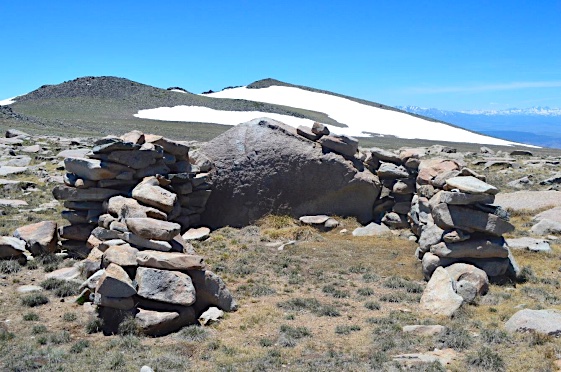
Years ago, I was traveling through the small town of Putre in northern Chile, when I saw something astonishing. The shape, size, and composition of its ancient stone walls in the high Andes at an elevation of 3500 meters (11,060 feet) were remarkably similar to those I’d seen in the lowland hills of interior New England. Though the inhabitants of pre-Columbian South America were raising camelids rather than sheep and cows, and though they were worlds apart from post-Columbian North American Yankees, their primitive farmstead stonework was remarkably similar. Why? Because the same three fundamental factors came together in time and space: the need to enclose grazing animals in heavily glaciated terrain underlain by crystalline igneous and(or) high-grade metamorphic rock.
Similarly, The Distinctively Basque Stone Shelters of California’s White Mountains, are remarkably similar to some I’ve seen in New England because the same three factors were controlling the outcome: animal enclosure, glaciated terrain, and hard crystalline rock. This new, 2022, article by Michael R. Wing, Elizabeth H. Wing, and Amin M. Al-Jamal, describes the shelters built during the mid 19th century to protect sheep grazing in the high meadows of the White Mountains of high eastern Sierras of California. The phrase “distinctly Basque” refers not to a cultural style of construction, but to the certain historic knowledge that they were built by Basque (or adjacent French) herders.
The captioned illustration above reproduces their Figure 1, a photo of Big Stone Shelter, which located above tree line at an elevation of 3840 meters (12,600 feet), even higher than in Putre, Chile. Its features –a glacially rounded boulder, a mix of angular and milled stones, the overall form, and the pattern of stacking– are identical to those of primitive fieldstone walls in New England. And though this shelter is a small enclosure rather than a wall around a land parcel, New England has many such small enclosures in its formerly de-forested highlands, or as niches attached to walls. Whether some or all of these were roofed with organic material that has since decomposed is unknown.
The similarities in expedient stone construction built by indigenous inhabitants in the high Andes, Basque herders in California Sierras, and farmers in New England demonstrate the adage that form follows function, regardless of historic or cultural setting. Such walls are ecofacts as much as they are artifacts.
Of course, the story of stone structures everywhere is much more complex than the simple connections made above. And these three connections are only a few among many. But the conclusion is always the same. Beneath cultural overlays, the expedient architectural requirements of herding animals in rocky glaciated landscapes produces similar results.